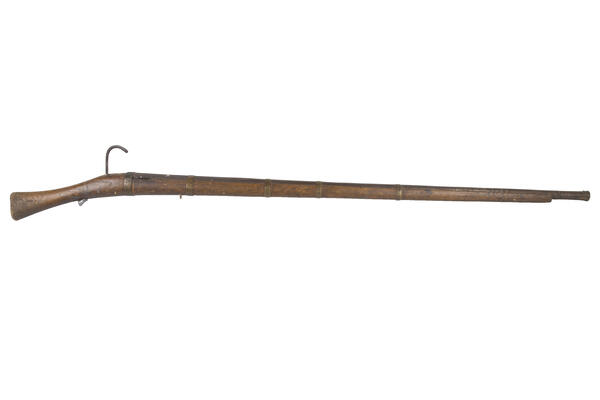The Transbaikal Regional Museum of Local Lore houses a matchlock gun made at the end of the 18th century. There is a special hole on its body to which a burning rod was brought in order to ignite the powder and make a shot.
Another type of gun was called a flintlock gun, which had a piece of flint inside. When the trigger was pulled, the flint struck a steel plate and the sparks ignited the gunpowder.
In the European part of Russia, matchlock muskets were most common. The first Russian explorers of Siberia used both types. It was not always possible to find the match cord in cold and damp climates, so the locals and the military installed flintlock mechanisms into the matchlock guns which were sent to them.
In 1658, the Siberian Cossacks took part in the battle with Manchurian and Korean armies. General Shin Ryu in his diary described the captured trophies — Russian weapons — and marveled at the flintlock mechanisms in the rifles:
Another type of gun was called a flintlock gun, which had a piece of flint inside. When the trigger was pulled, the flint struck a steel plate and the sparks ignited the gunpowder.
In the European part of Russia, matchlock muskets were most common. The first Russian explorers of Siberia used both types. It was not always possible to find the match cord in cold and damp climates, so the locals and the military installed flintlock mechanisms into the matchlock guns which were sent to them.
In 1658, the Siberian Cossacks took part in the battle with Manchurian and Korean armies. General Shin Ryu in his diary described the captured trophies — Russian weapons — and marveled at the flintlock mechanisms in the rifles:



